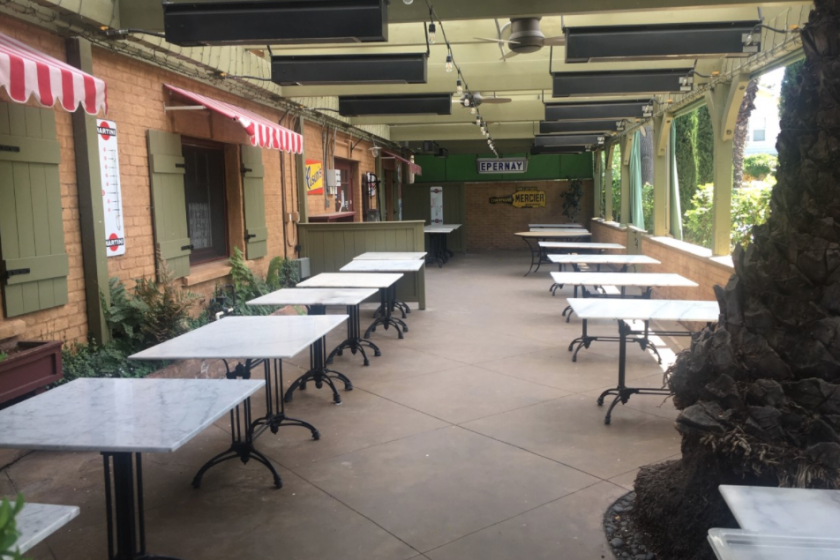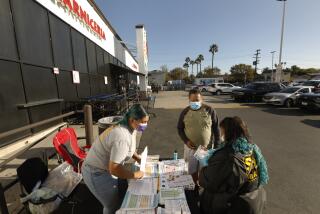L.A. County achieves major coronavirus win as transmission rate hits lowest level
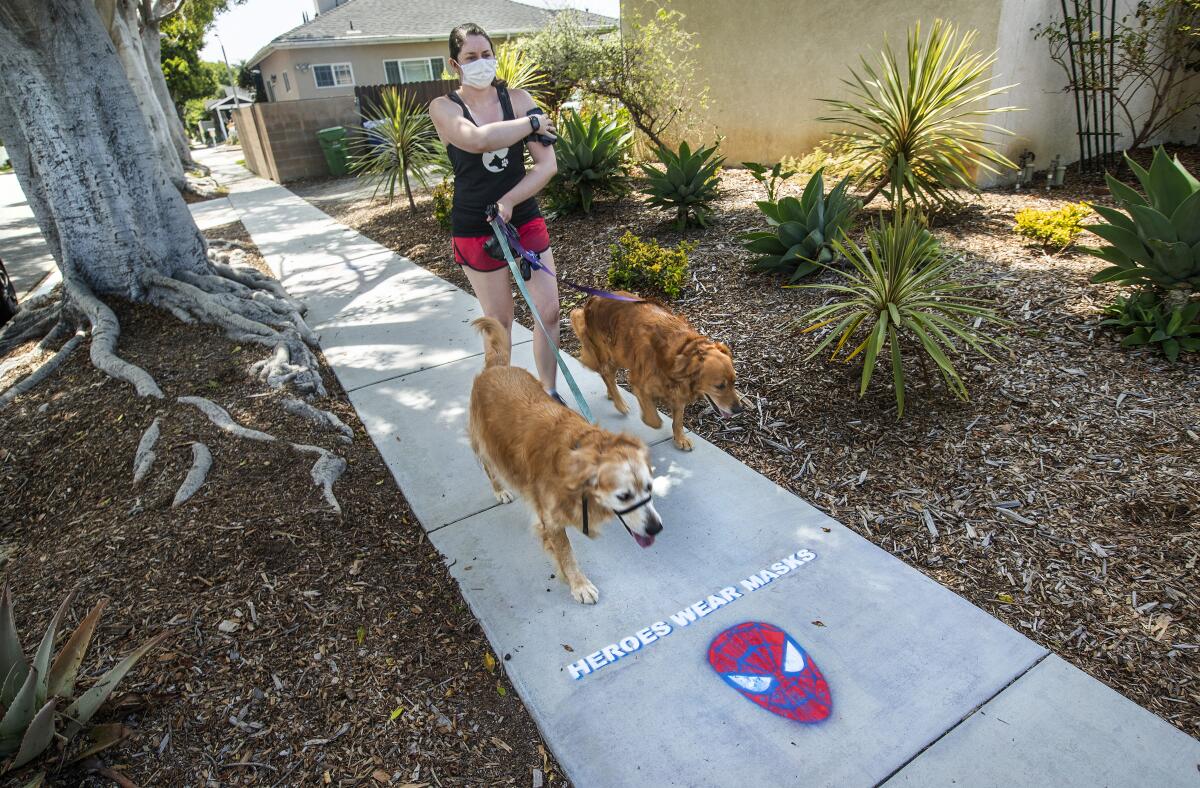
- Share via
Los Angeles County has reached a promising new milestone in its fight to control the spread of the highly infectious coronavirus.
The transmission rate in the nation’s most populous county, home to 56% of COVID-19 deaths in California, is now in its best position since the magnitude of the outbreak became clear in March.
At the start of the pandemic’s arrival in L.A., the transmission rate of the coronavirus was high; on average, every one person infected went on to infect more than three other people. Scientists call this rate of transmission the effective transmission number, or “R.”
But by late March, after the stay-at-home order was put into effect, the effective transmission number fell to 1, meaning that, on average, every person with COVID-19 infected one other person. That rate, if sustained, means that the number of people infected remains constant.
California is reopening, but anxious customers are slow to come back
On Wednesday, Dr. Christina Ghaly, director of health services for L.A. County, said an increasing downturn in the daily number of new confirmed cases suggested that the effective transmission number was now slightly under 1.
“If ‘R’ stays under 1, then the epidemic in Los Angeles County is expected to decrease over time,” Ghaly said.
“That is a good thing for all of us. As we work to reopen the economy and get people back to work and back to living their lives, we need to work together to avoid having transmission again increase,” she said.
“This will require everyone doing their part to continue the same basic core public health measures that we’ve all become so familiar with: physical distancing, handwashing, cleaning surfaces regularly, wearing facial coverings, self-monitoring for symptoms, and staying at home when you are ill.”
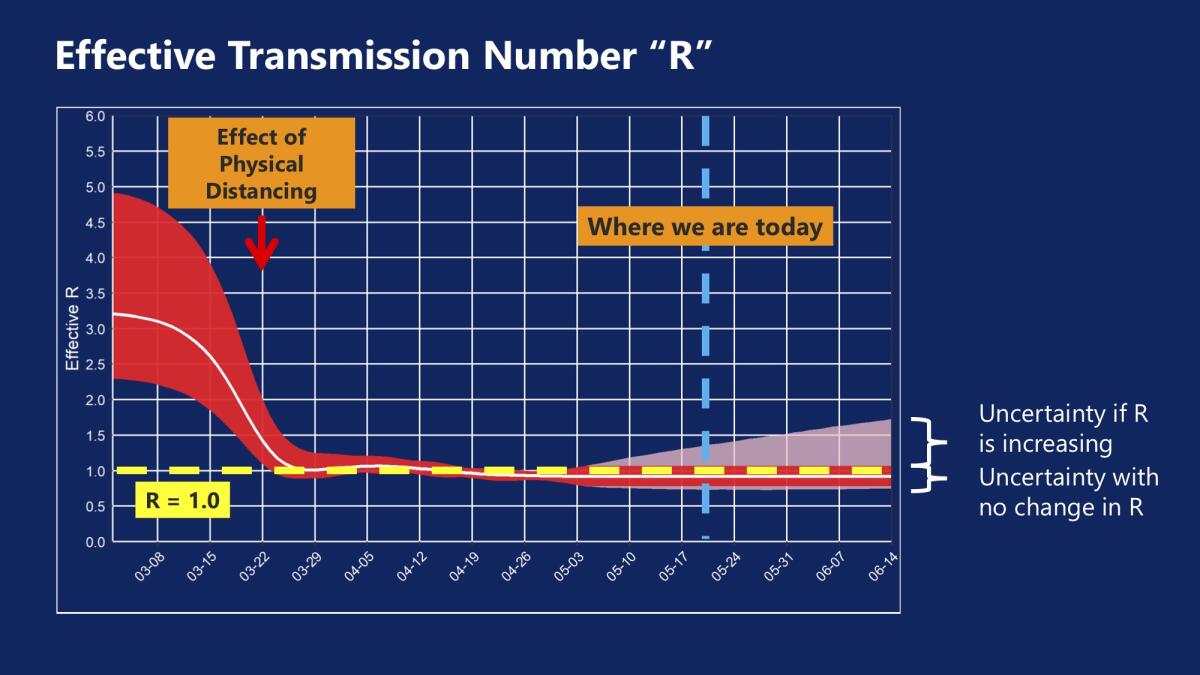
Use of hospital beds by COVID-19 patients is also stable and slightly trending downward in L.A. County, Ghaly said.
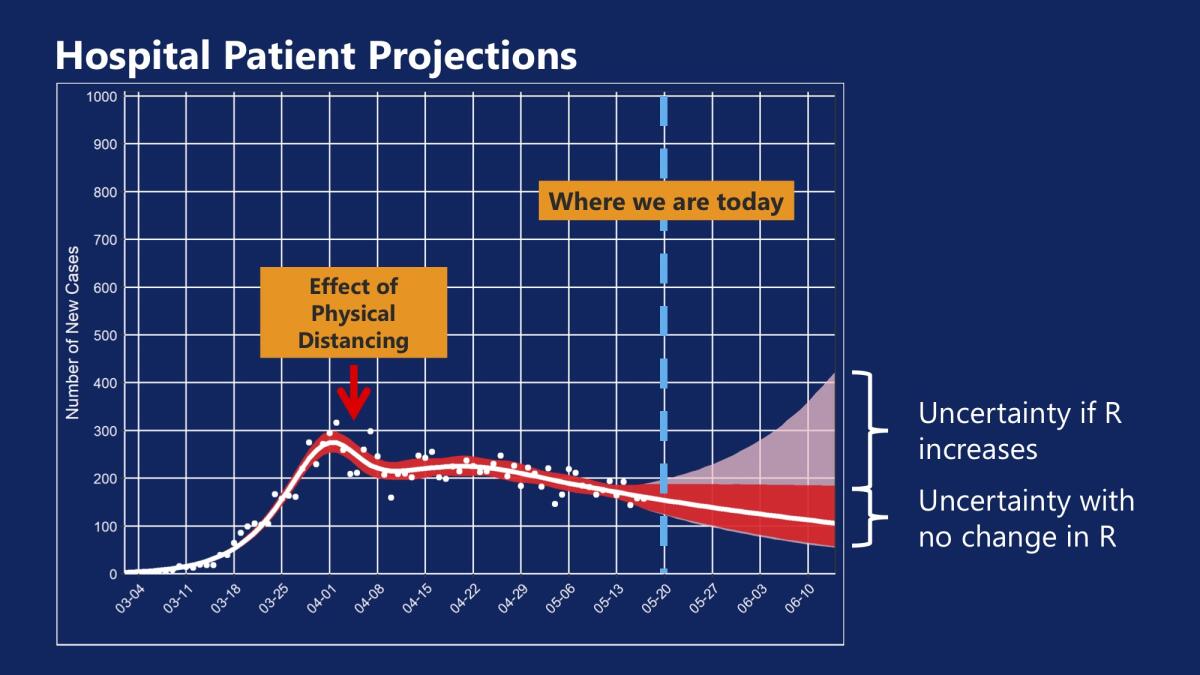
It’s still possible, however, that Los Angeles County could run out of intensive care beds if disease transmission rates rise significantly. If more people start getting infected as society reopens, officials won’t be aware about it until two or four weeks later, the time it takes for those people to get so sick they need medical attention.
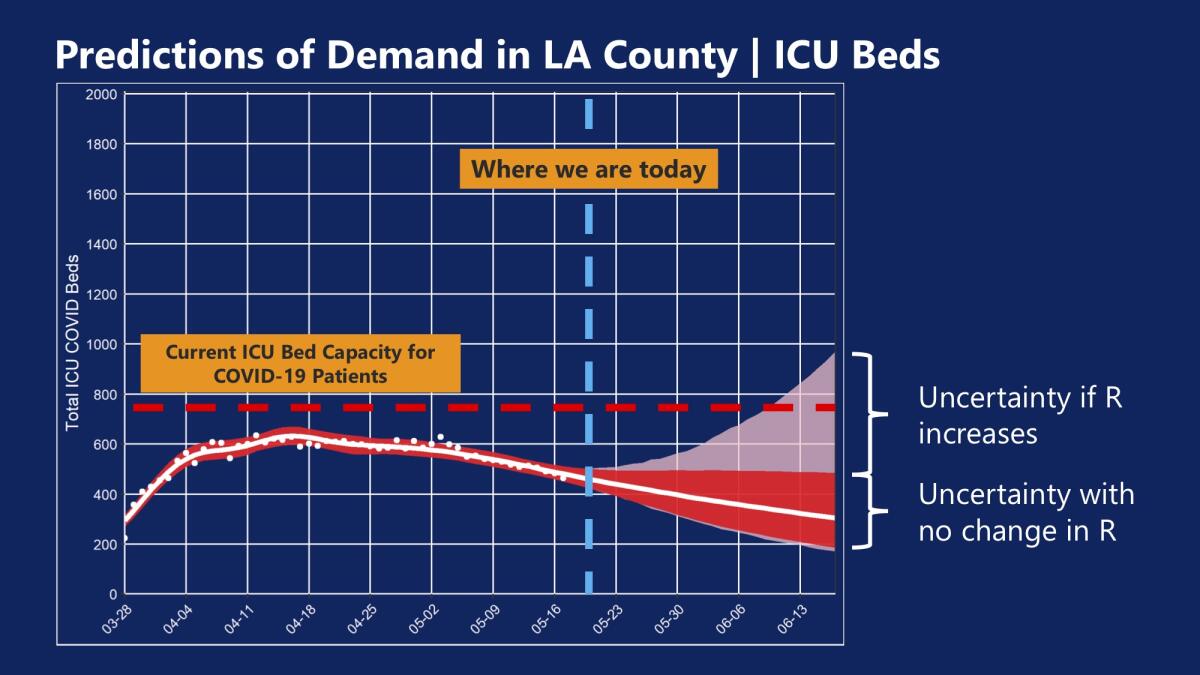
An L.A. County simulation has found that if the county can keep the disease transmission rate the same as it is now, by the start of December, just 9% of L.A. County residents will have contracted the coronavirus.
But if the effective transmission number were to rise to 1.5 — meaning each infected person gives the virus, on average, to 1.5 other people — 44% of county residents will have been infected by the start of December.
In the unlikely scenario that people resume the same habits they practiced before the outbreak, 96% of county residents will have been infected by December.

With the weather improving and the Memorial Day weekend around the corner, L.A. County’s director of public health, Barbara Ferrer, warned against holding parties with people from other households and said gatherings were still banned under the county Safer at Home order.
“It’s still relatively easy to become infected, particularly if you’re not taking precautions,” Ferrer said. “And unfortunately, there have been recent parties and gatherings that did result in a number of newly infected people.”
Pasadena officials warned of a cluster of at least five coronavirus cases linked to a birthday party in which one guest showed up exhibiting symptoms and joking she might have the virus. Several others became seriously ill afterward.
Gatherings have been a major route of transmission for the coronavirus, according to the U.S. Centers for Disease Control and Prevention, with scientists identifying Mardi Gras celebrations in Louisiana, a biotech conference in Massachusetts and a funeral in Georgia as major factors in the rapid spread of the virus in the last week of February.
A major problem has been the transmission of the virus by people who aren’t showing signs of illness or are unaware that they’ve been infected. Simply talking can spread infectious droplets between people.
Many people are growing weary of state orders banning gatherings, including some church leaders and parishioners. More than 1,200 pastors have vowed to hold in-person services on May 31, Pentecost Sunday, defying a state moratorium on religious gatherings that Gov. Gavin Newsom imposed to slow the spread of the novel coronavirus.
Churches have also been shown to be places where the coronavirus can easily spread. A study published in the CDC’s Morbidity and Mortality Weekly Report looked at how three people fell ill with COVID-19 after attending church in Singapore on the same day as two tourists from Wuhan, China. One of those who fell ill sat in the same seat as one of the tourists from Wuhan, according to closed-circuit-camera footage of the church.
In Washington state, a single person who was showing signs of illness attended a 2½-hour choir practice at church. After the practice, 52 of the 60 other people there fell sick with COVID-19 — a disease attack rate of 87% — and two died. The virus’ spread was likely facilitated by people being less than six feet from one another and worsened by singing together, the CDC said.
The latest maps and charts on the spread of COVID-19 in Los Angeles County, including cases, deaths, closures and restrictions.
The coronavirus death toll has been far worse in L.A. County compared to the annual death toll from the flu in the previous two years.
Last year, 125 people died from the flu in L.A. County, and the year before that, 300 died. On average, L.A. County loses 250 lives to the flu every season, which usually lasts six to seven months.
In just a little more than two months, Los Angeles County has recorded 1,976 virus-related deaths, according to Wednesday’s data from the Los Angeles Times’ coronavirus tracker.
That’s 56% of the state fatality total of 3,501, despite the county being home to just one-quarter of California’s population. An average of more than 300 L.A. County residents have died weekly over the past five weeks.
“You can understand why the mortality rate for COVID-19 is so worrisome, because it far exceeds what we’re normally used to seeing with a virus or communicable disease,” Ferrer said last week. “Many people today are experiencing the pain and the sorrow of losing someone that they love to COVID-19.”
Times staff writer Matthew Ormseth contributed to this report.
More to Read
Sign up for Essential California
The most important California stories and recommendations in your inbox every morning.
You may occasionally receive promotional content from the Los Angeles Times.
